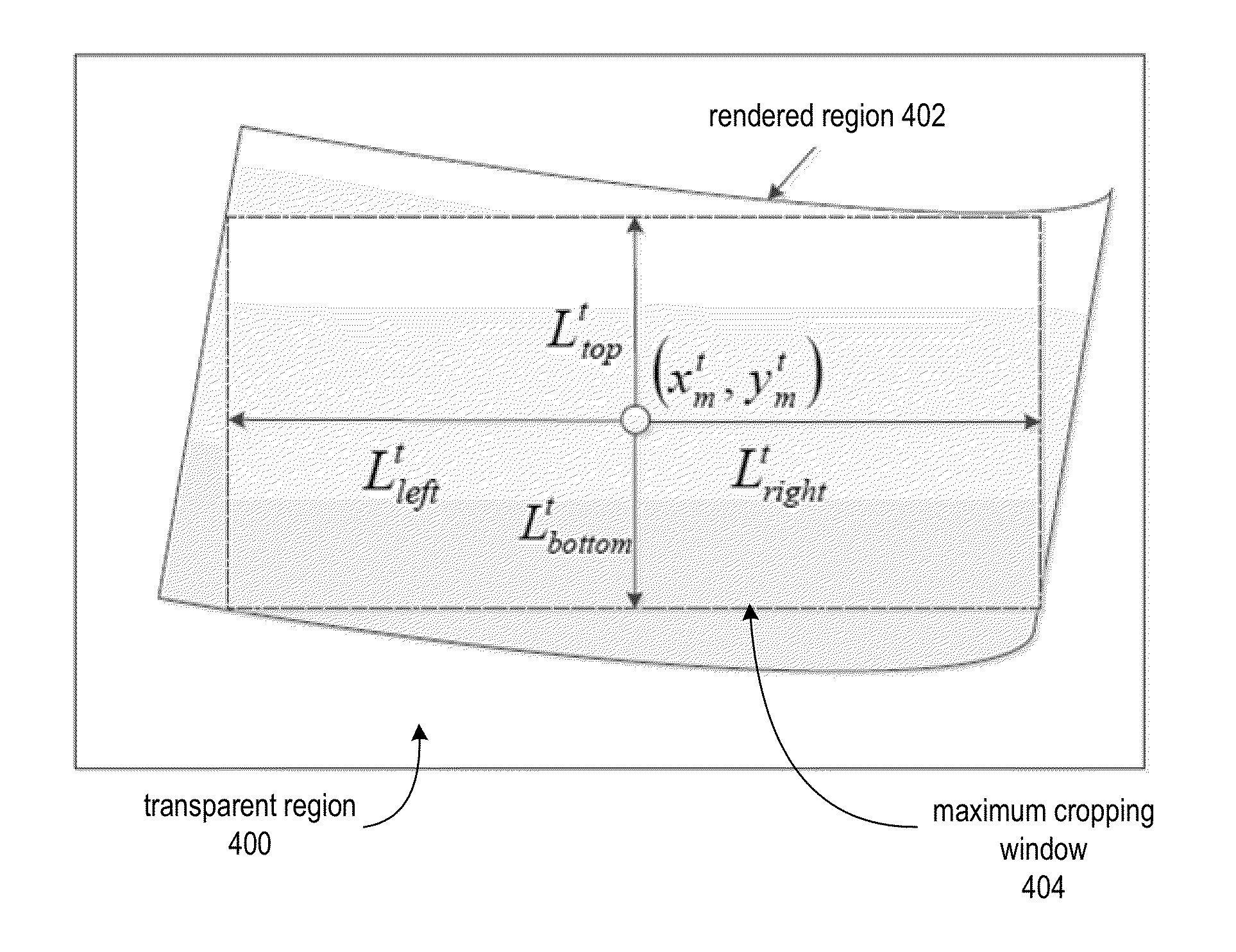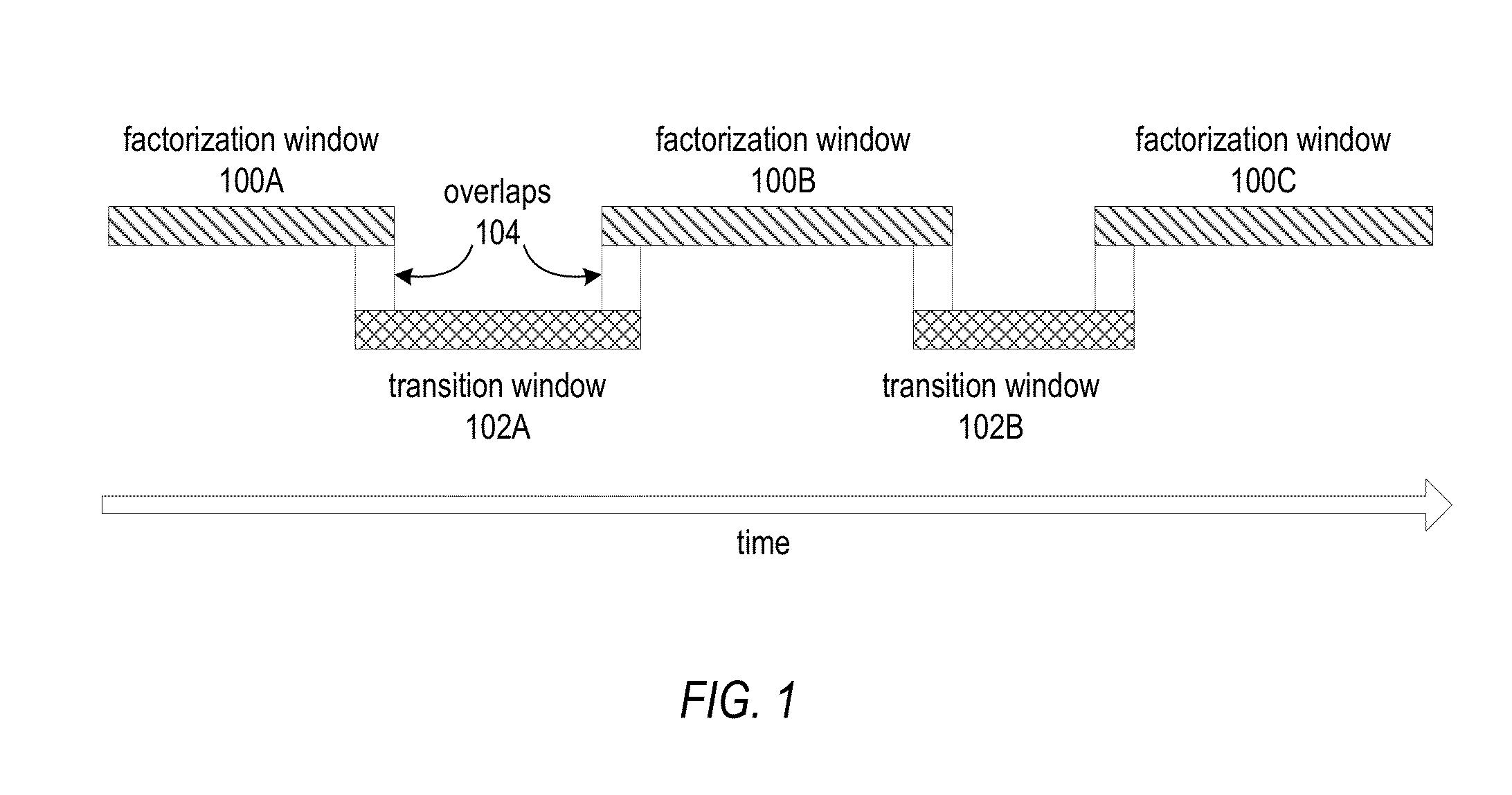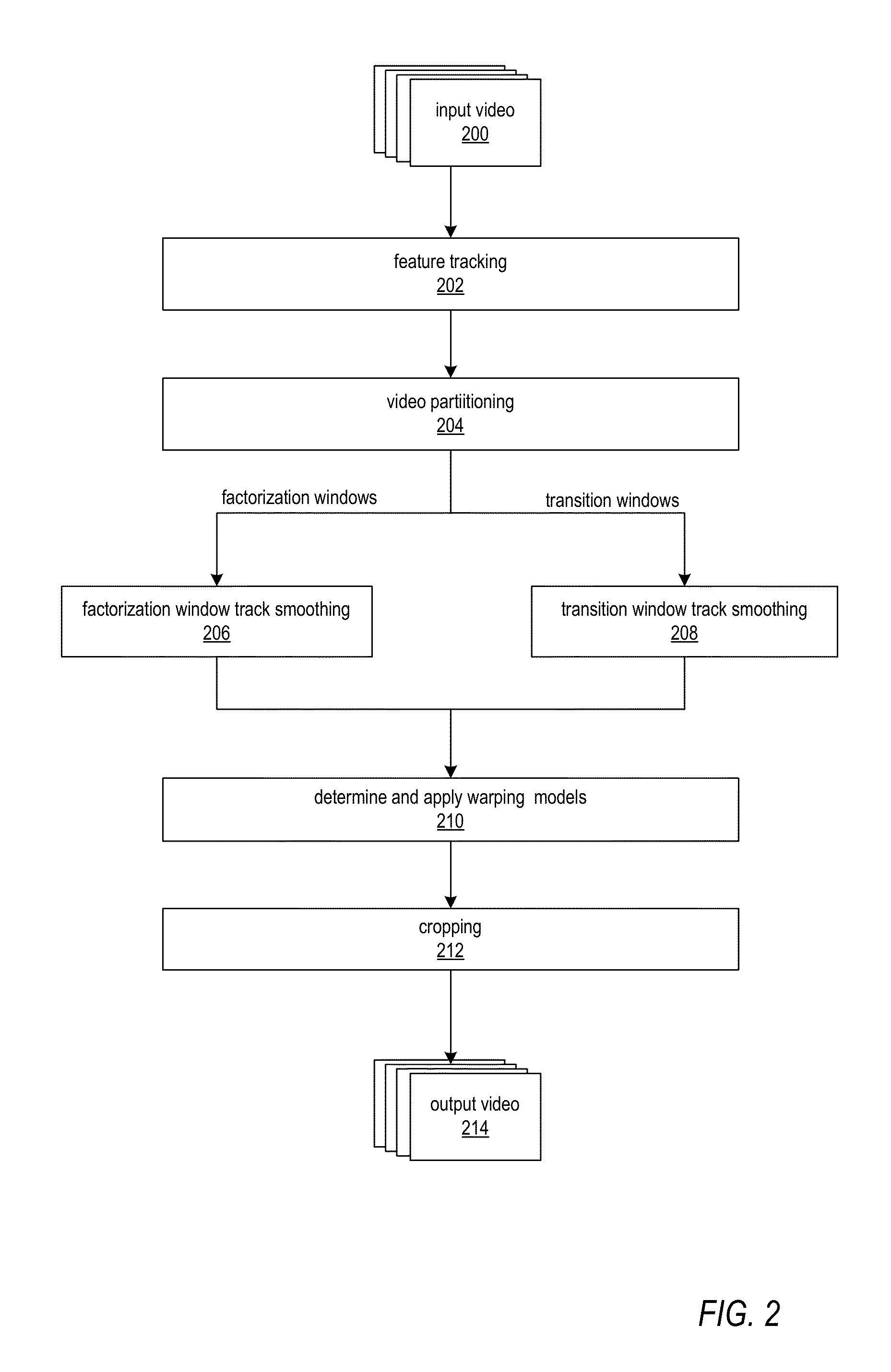Methods and Apparatus for Robust Video Stabilization
a video stabilization and video technology, applied in the field of methods and apparatus for robust video stabilization, can solve the problems of poor stability of hardware, inability to provide stabilization in many situations, and inability to meet the needs of many situations, and achieve the effect of smoothering the transition between frames
- Summary
- Abstract
- Description
- Claims
- Application Information
AI Technical Summary
Benefits of technology
Problems solved by technology
Method used
Image
Examples
example implementations
[0121]Some embodiments may include a means for performing robust video stabilization as described herein. For example, a video stabilization module may receive an input video sequence, and may perform robust video stabilization to generate a stabilized, and cropped, output video as described herein. The video stabilization module may in some embodiments be implemented by a non-transitory, computer-readable storage medium and one or more processors (e.g., CPUs and / or GPUs) of a computing apparatus. The computer-readable storage medium may store program instructions executable by the one or more processors to cause the computing apparatus to perform receiving a video sequence as input, performing feature tracking on the sequence, partitioning the video sequence into factorization windows and transition windows, applying track smoothing techniques to the windows, determining and applying warping techniques to the frames in the video sequence, and cropping the warped frames, as describe...
PUM
 Login to View More
Login to View More Abstract
Description
Claims
Application Information
 Login to View More
Login to View More - R&D
- Intellectual Property
- Life Sciences
- Materials
- Tech Scout
- Unparalleled Data Quality
- Higher Quality Content
- 60% Fewer Hallucinations
Browse by: Latest US Patents, China's latest patents, Technical Efficacy Thesaurus, Application Domain, Technology Topic, Popular Technical Reports.
© 2025 PatSnap. All rights reserved.Legal|Privacy policy|Modern Slavery Act Transparency Statement|Sitemap|About US| Contact US: help@patsnap.com



